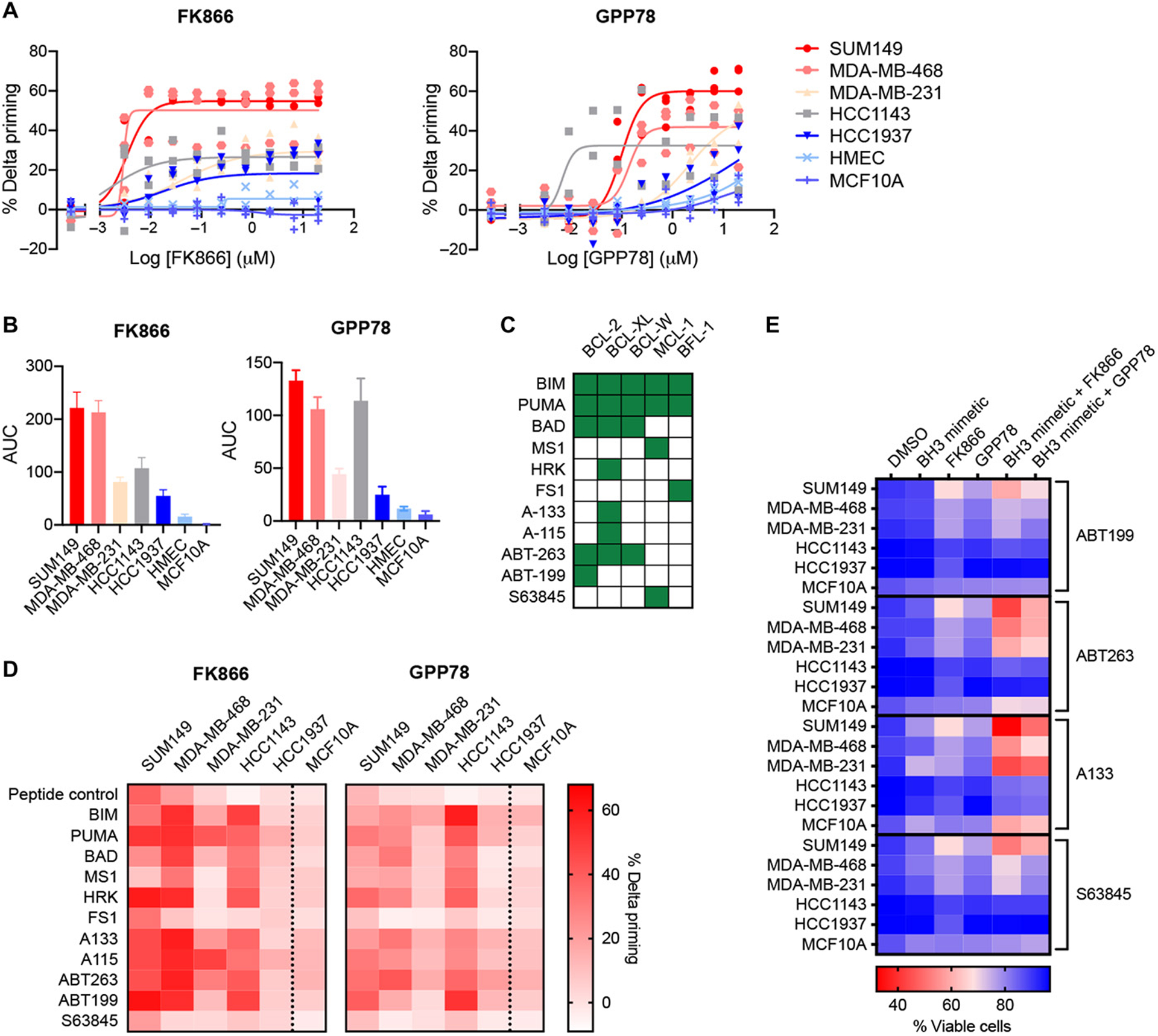Figure 2. NAMPT inhibition increases overall mitochondrial apoptotic priming, anti-apoptotic dependencies and sensitivity of TNBC cell lines to BH3 mimetics and apoptosis inducers.

(A) Percentage delta priming of TNBC cancer cell lines and non-malignant cells (MCF10A and HMEC) after 48h exposure to NAMPT inhibitors (FK866 and GPP78) at the indicated concentrations. Priming was determined by DBP using BIM peptide. Delta priming is calculated relative to DMSO treated samples. Data are mean and SD of 2 or 3 independent experiments. (B) AUC and SD of the % delta priming dilution curves in (A). (C) Binding properties of BH3 peptides to anti-apoptotic BCL-2 family members as described previously6. Green squares indicate binding, white squares indicate no binding or an EC50 binding value > 1 μM. (D) Heatmap of the % delta priming of TNBC cell lines and MCF10A cells exposed for 48 hours to 0.01 μM FK866 or 0.1 μM GPP78. Percent delta priming is calculated by comparing cytochrome C abundance in drug treated versus vehicle treated cells. Responses to the BIM and PUMA peptide indicates overall mitochondrial priming. Responses to the BAD, HRK, MS1, FS1 peptides and BH3 mimetics indicate specific anti-apoptotic dependencies. BAD and ABT-263 indicate BCL-2, BCL-XL or Bcl-w dependency; HRK, A-133 and A-115 indicate BCL-XL dependency; ABT-199 indicates BCL-2 dependency; MS1 and S63845 indicate MCL-1 dependency. Data are average of 3 independent experiments. Data also are presented as bar graphs + SD in supplementary material (fig. S3). (E) Cell death measurements using microscopy-based AV-Hoechst cell death assay. TNBC cells and MCF10A cells were treated for 72 hours with 0.01 μM FK866 and 0.1 μM GPP78 in the presence or absence of 0.1 μM BH3 mimetics. Values are means of 3 independent experiments. Data also are presented as dot plots + SD in supplementary material (fig. S4).
